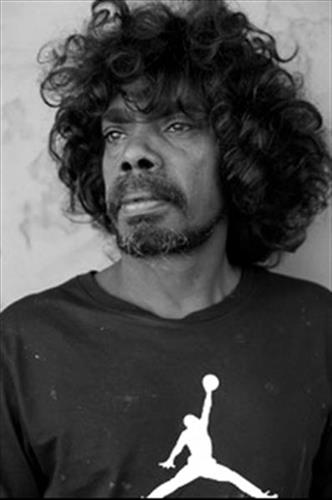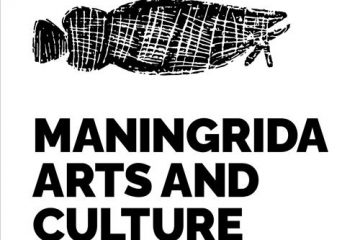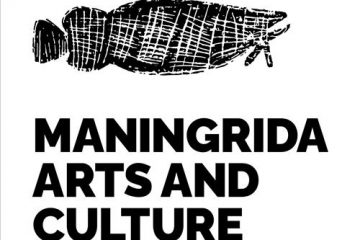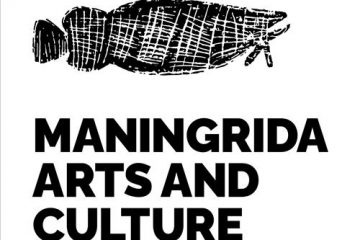111982346274
Saratoga
It is well known that Aboriginal art often depicts images of sacred totems or dreamings of Aboriginal culture. However, the world of the non-sacred also provides a rich source of subject matter for Aboriginal art. Much of the rock art of western Arnhem Land for example features secular topics such as common food animals and plants, depicted because of their economic importance but also merely because of their existence in the environment.
This is a painting of two ngaldadmurrng saratoga fish [Scleropages jardini] sometimes also called the Northern Spotted Barramundi. Saratoga are commonly found in creeks, rivers and billabongs around the artist’s clan estate. The animals depicted are on one level easy to recognize and their meaning is easily accessible. On a deeper level the animals are depicted with intense rarrk – cross-hatched – infill which creates a reference to Mardayin ceremonial mysticism. Saratogas make their nests on the bottom of river beds in the sand by digging with their tails and fins and lay eggs into these depressions. During mortuary rituals the Kuninjku imitate these nests in sand sculpture. At the end of funerals all those who have attended the funeral are required to stand in the ‘saratoga’s nest’ and they are doused with water to be cleansed from the polluting effects of the deceased. A large meteorite crater near Mumeka in the Liverpool River district is said to be the nest of the saratoga which now stands in the landscape as djang – a sacred site.



